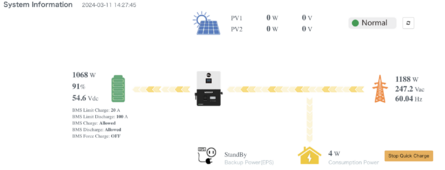vnr111
New Member
Hi @sijones2010 - I'm in the process of getting this set up for my Smart Shunt - this is great! Cant wait to get it up and running.
I'm running into an issue with the MQTT setup - I keep getting this error in my Home Assistant MQTT logs:
2023-12-10 03:25:57: Client vedirectmqtt already connected, closing old connection.
2023-12-10 03:25:57: New client connected from 10.0.1.112:55569 as vedirectmqtt (p2, c1, k15, u'emon').
Any idea why it keeps thinking its connected and reconnected?
I have MQTT running on other devices so I wasnt sure if thats what could be doing it.
I'm running into an issue with the MQTT setup - I keep getting this error in my Home Assistant MQTT logs:
2023-12-10 03:25:57: Client vedirectmqtt already connected, closing old connection.
2023-12-10 03:25:57: New client connected from 10.0.1.112:55569 as vedirectmqtt (p2, c1, k15, u'emon').
Any idea why it keeps thinking its connected and reconnected?
I have MQTT running on other devices so I wasnt sure if thats what could be doing it.








